As I wrote in a prior post, I very much enjoyed Flowers and Herbs of Early America by Lawrence Griffith, Colonial Williamsburg's Curator of Plants. After my short review, Lawrence and I got in touch and he agreed to answer a few questions.
~
Q. First, I'd love to hear about how you became a gardener, particularly a gardener interested in heirloom plants.
~
A. My grandparents had a summer home in New Milford, Connecticut, in the Berkshires. I was very beautiful. We had a 20-mile view into the Litchfield Hills. My grandmother was a gardener and introduced me to the culture. The Green thumb skips a generation. My mother was an enthusiastic, but no avid. The house stood on a six acre former milk cow pasture, so the soil was unbelievably fertile. I never fertilized. And then I was loaned out to gardening neighbors who taught me to garden, weekend-New York people. So I did everything the old fashionable way, wettable powers, etc.
~
Q. What was the impetus for the book?
~
A. In 2001 I was the recipient of a Mars Foundation grant that allowed me to study heirloom plants. It funded 3 years of live field trials, and 3 years of research. While I gardened, Barbara Lombardi, the photographer, would photograph behind me. And we put two and two together and came up with a project.
~
Q. What are your five favorite plants in the book for the home gardener and why?
~
A. Adonis (Adonis aestivalis) is a cool season annual with millennia of history behind it. If the seed is sown by the middle of March its cherry red blossoms emerge by the middle of June. Fall sown Adonis will germinate in the fall and survive the winter to bloom the following spring, like such things as Calendula, English daisies, and wallflower. It’s cheery, about 18” tall, with very attractive ferny foliage.
~
I like the China aster (Callistephus chinensis), a late season annual, because of the relatively large size of the flowers in comparison to other antique plants. They make very good cut-flowers, and bloom at a time when the asters and late perennial sunflowers are blooming. China asters are typically blue, white and pink and either single or double. Gardeners who plant seed in the spring should expect flowers by the end of August.
~
Cypress vine (Ipomoea quamoclit) is a tropical annual vine from the West Indies. ‘Cypress’ refers to the very fine foliage of the vine, also known Cardinal Vine. It also has bright red flowers, about ½” across, and if planted in masses it can cover a long picket fence. One caveat is that it is very prolific with its seed and can become a pest.
~
I enjoyed the annual larkspur (Consolida ambigua) the most because it did the best job in reseeding. The aim of the Mars Foundation grant was to find crops of flowers that would reseed and come back the following spring. Larkspur now is germinating in my garden at home, the genesis for next year’s crop. Larkspur flowers in white, blue and pink and great masses of it can be achieved if it is left to yellow and set seed, and then disperse it.
~
The scarlet pentapetes (Pentapetes phoenicia) is a tropical annual, with scarlet flowers, that grows to five feet, and is given to reseeding. In addition to its stellar flowers, its serrated foliage is a deep glossy green. This and the cypress vine abhor chilly weather and the gardener is urged to wait until the end of May to attempt seed germination.
~
Q. What do you hope a reader gets from the book and why?
~
A. I want the reader to know of the real beauty in older, smaller flowers. Prior to the great age of hybridization for larger flower size and longer duration of bloom, simpler flowers delighted millions. Barbara’s photographs really enhance the architectonic aspect of many flower forms and gives some glimpses into the origins of common names that have been attached to them throughout time.
~
I’d like the gardener to become a little aware of the history of botany, that our plant legacy started with the ancients, and has become amended over time. The colonial plant palette still incorporates much of the Greco-Roman herbal, and I find that intrinsically interesting.
~
I’d like the gardener to know of the rewarding experience of growing flowers and herbs from seeds, sown directly into the ground. While initially planting and thinning seedlings can be tedious, a gardener can easily amass a collection of dozens of species without undo expense.
~
Q. In a world gone mad with politics and financial meltdown, what does gardening do for our peace, quiet and sanity? What do you tell younger adults who may ignore its beauty and pleasure?
~
A. Like any other task, I think gardening can be meditative, if the mind concentrates on the task at hand. Frankly, I’d rather be bothered by lawn mower and tractor problems, vole problems, and drought, than the ups and downs of the market. A well manicured yard is a peaceful thing for me to observe and probably does more to restore my soul than anything else.
~
Younger adults need to look beyond the ‘hard work’ aspect of gardening. As younger adults mature, they begin to learn that in the myriad ‘dull’ spots in life, a hobby, such as gardening, can be fulfilling.
~
And gardening can be done on every scale, from landscape development to window box gardening. I don’t think you can ‘get the bug’ without some hands on, or a familial tie, such as I had with my grandmother who taught me the sheer beauty of landscape and gardens.
Welcome to Heirloom Gardener
Friday, November 07, 2008
Interview with Lawrence Griffith, Colonial Williamsburg's Curator of Plants and Author of Flowers and Herbs of Early America
Posted by
Julia Erickson
at
12:01 AM
![]()
![]()
Labels: Books and Movies
Subscribe to:
Post Comments (Atom)
Search Heirloom Gardener
Labels
- About Blogging
- Annuals/Biennials and Perennials
- Autumn Garden
- Books and Movies
- Botanical Gardens
- Bulbs and Tubers
- Children's Garden
- Chrysanthemum
- Clematis
- Container Gardening
- Crocus tommasiniasus roseus
- Cut and Forced Flowers
- Cutting and Rose Gardens
- Dahlias
- Deep Thoughts About Gardening
- Egg Garden
- Fences Arbors Walls and Paths
- Floral arrangements
- Front Border
- Fun Stories About Gardening
- Garden Bloggers' Bloom Day
- Garden Bloggers' Design Workshop
- Garden Planning
- Gardening Blogs
- Gardening Tools and Structures
- Gardening with Children
- Goldberry Hill
- Heirloom and Organic Food
- Hibiscus
- Holidays
- Hydrangeas
- Japanese Beautyberry
- Lilies
- Mixed Borders
- New Jersey / Local Interest
- Nurseries
- Online Gardening Resources
- Peonies
- Pest Control
- Picture This Photo Contest
- Piet Oudolf
- Poppies
- Propagation and Seeds
- Pruning and Maintenance
- Roses
- Seed Heads
- Self Seeders
- Shrubs
- Spring Garden
- Summer Garden
- Trees
- Wildlife in the Garden
- Winter Garden
- Zinia
Blog Archive
-
▼
2008
(202)
-
▼
November
(39)
- Six Trouble-Free Heirloom Roses: Rose de Rescht, ...
- After the Frost: the Birch Tree
- Courtnay Daniels's 15 acres of gardens in Virginia
- Amaryllis, Winter Containers and Christmas Decorat...
- After the Frost: Thai Basil
- Happy Thanksgiving: A Gardener's Thanksgiving Day...
- Shrub Hibiscus Seed Heads in the Walled Garden
- CowPots™: Molded Manure - an idea to check out for...
- Heritage Rose Hip in the Children's Garden
- After the Frost: Sunflower Seed Heads
- Five Tips for Growing Edibles with Children
- After the Frost: Brown Eyed Susan Seed Heads
- A Summer and Autumn Perennial: Metamorphosis of C...
- After the Frost: Star Magnolia in the Walled Garden
- Autumn Beauty: the Orange and Yellow Rose Hips of...
- Autumn Beauty: Excellenz von Schubert
- Autumn Beauty: the Fern Fronds change color too
- The Frost is Coming: It's Time to Cut All the Flo...
- A Late Season Bouquet in Tyra's Garden
- Rosa virginiana hips
- Garden Bloggers' Bloom Day November 2008 - More Bl...
- "Put the Pruners Down and Step Away": Autumn is n...
- Autumn Beauty: The Last Clematis
- Sweet Brier Rose Hips
- Perhaps we garden bloggers can help remember our v...
- Autumn Beauty: Grasses in my Mixed Borders
- Autumn Beauty: Chrysanthemums
- How to Make a Planting Square to Uniformly Space Y...
- In Praise of Blotanical: Where Garden Blogs Bloom
- How to Grow Flowers on a Military Base in Iraq
- Interview with Lawrence Griffith, Colonial William...
- A Lattice Screen to Hide My Gardening Supplies and...
- Autumn Beauty: Clematis Seed Heads
- Autumn Beauty: The Yellow Leaves of the Hickory Tree
- One Garden That Still Looks Great After the Frost
- New Blogger Gadget: Followers
- Beyond Daffodils and Tulips: Seven Minor Bulbs To...
- Fragrance in the Garden: The Katsura Tree in Autumn
- A Flowering Tree for Spring and Fall: Autumn Cher...
-
▼
November
(39)








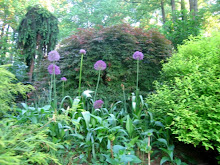
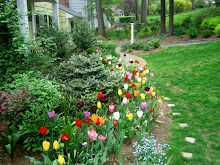
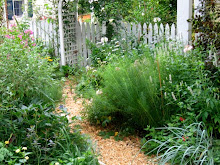
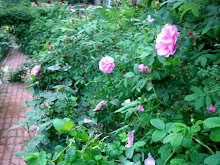

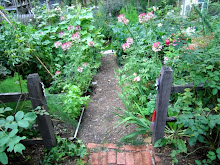

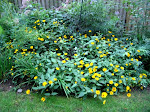
No comments:
Post a Comment